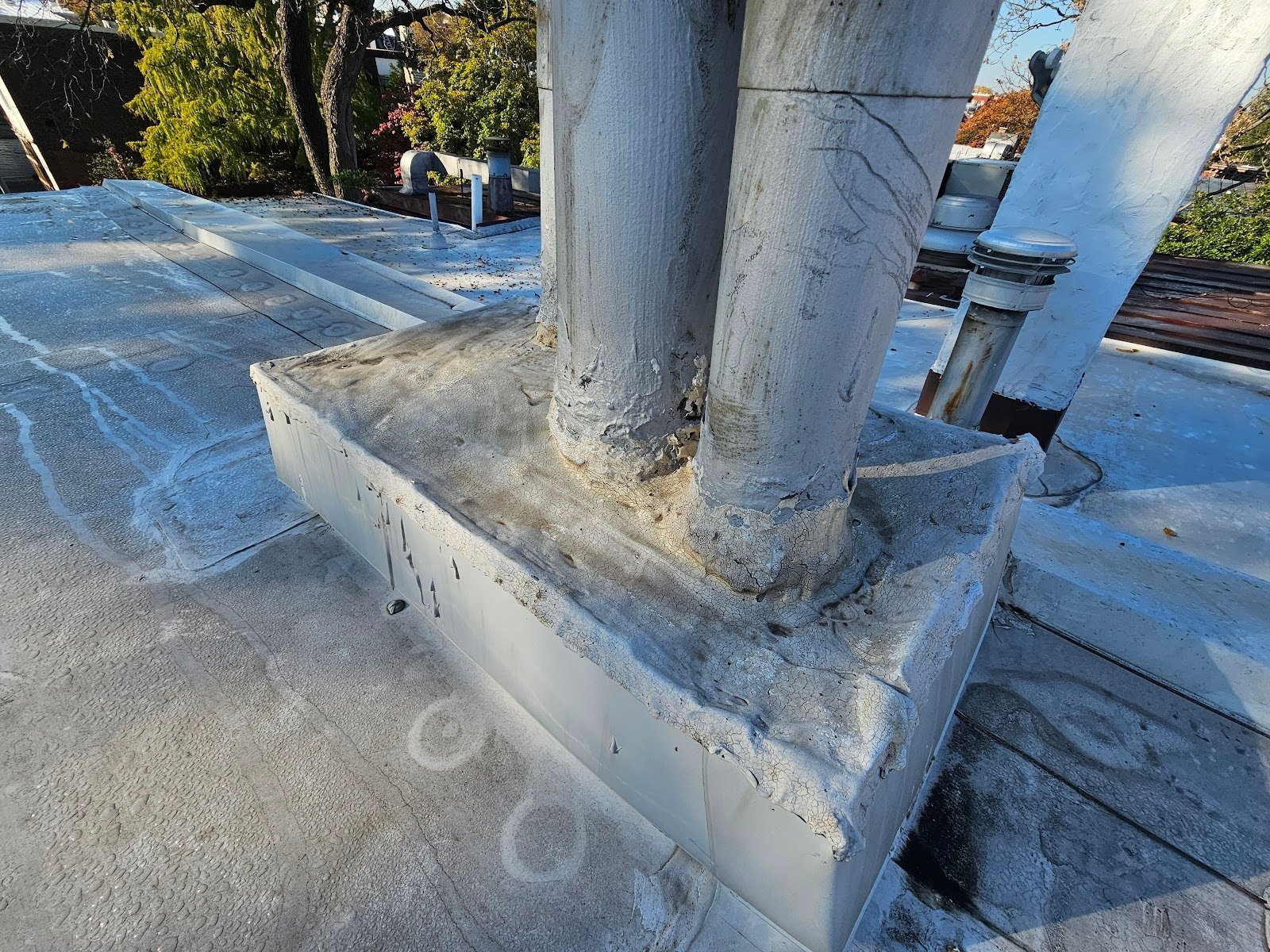Risks of Cabling Dangled on Rooftops
The picture below shows a set of communication wires running dangling across a rooftop. Instead of just running these wires through the interior directly to where they were desired, through a proper pitch pocket, they instead dangled these wires along the rooftop, over a chimney and then down the side of the building. This type of makeshift technique might kind of work, but doesn’t at all look professional, it causes other problems, and it won’t last as long either.
The reason that this type of half-way, quick and dirty approach causes other problems is because as it dangles along the rooftops, it will move about in the wind and can catch a hold of other items such as the duct rain caps and possibly dislodge them in high winds, and the rubbing of the cabling across the rooftop can also cause accelerated wear and deterioration.
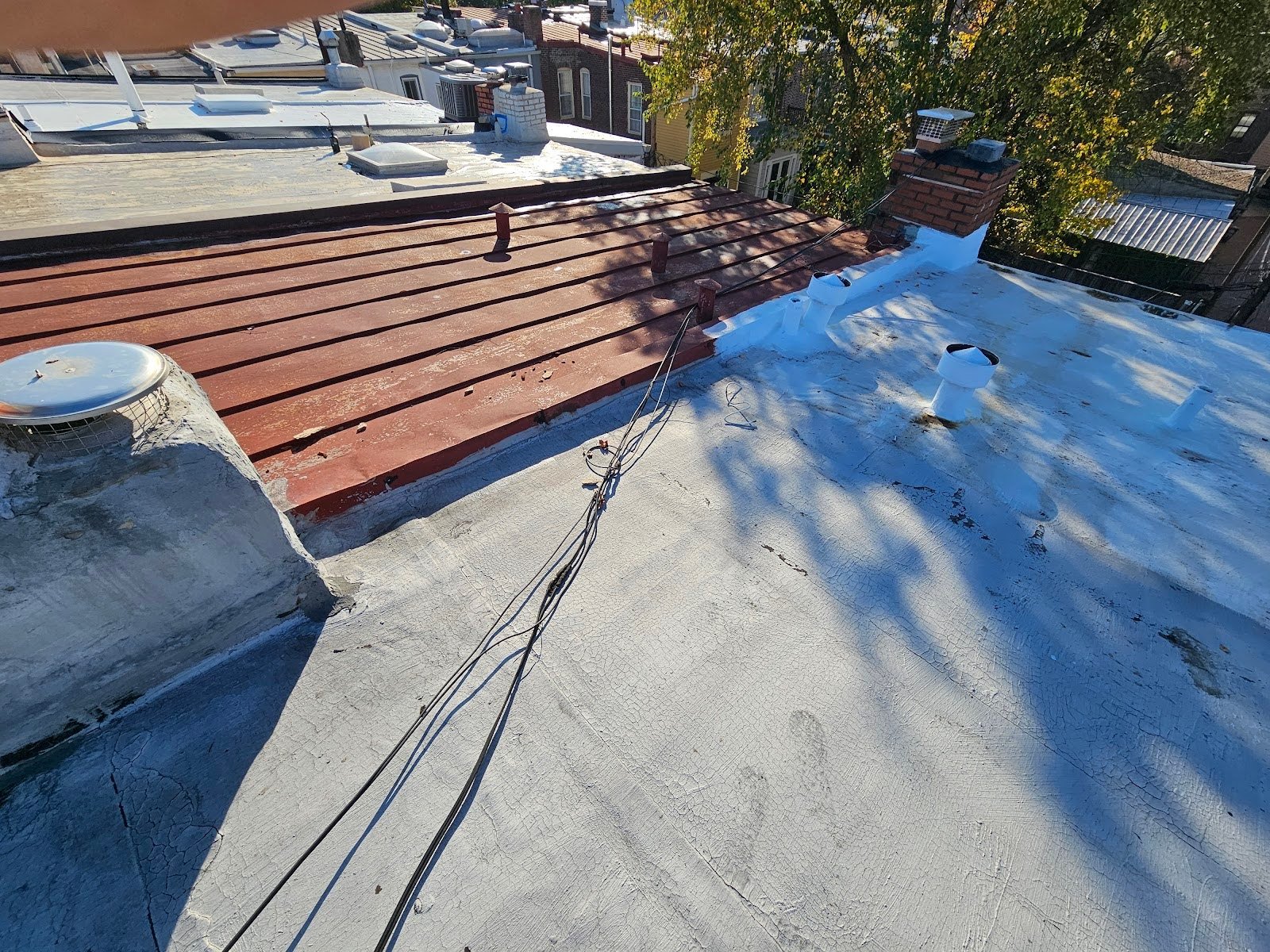
Also, the cables simply wear out faster themselves. If they were run through the interior, the majority of the length of the cabling would be protected from exposure to ultraviolet rays.
Here in the next picture below we show where these cables extend down off of the chimney back towards the ground. They run almost the entire length of the building back down. These cables, being run in this sloppy type of manner, isn’t really necessarily a code violation. The most referenced residential building codes don’t have many provisions that apply to data and low volt wiring.
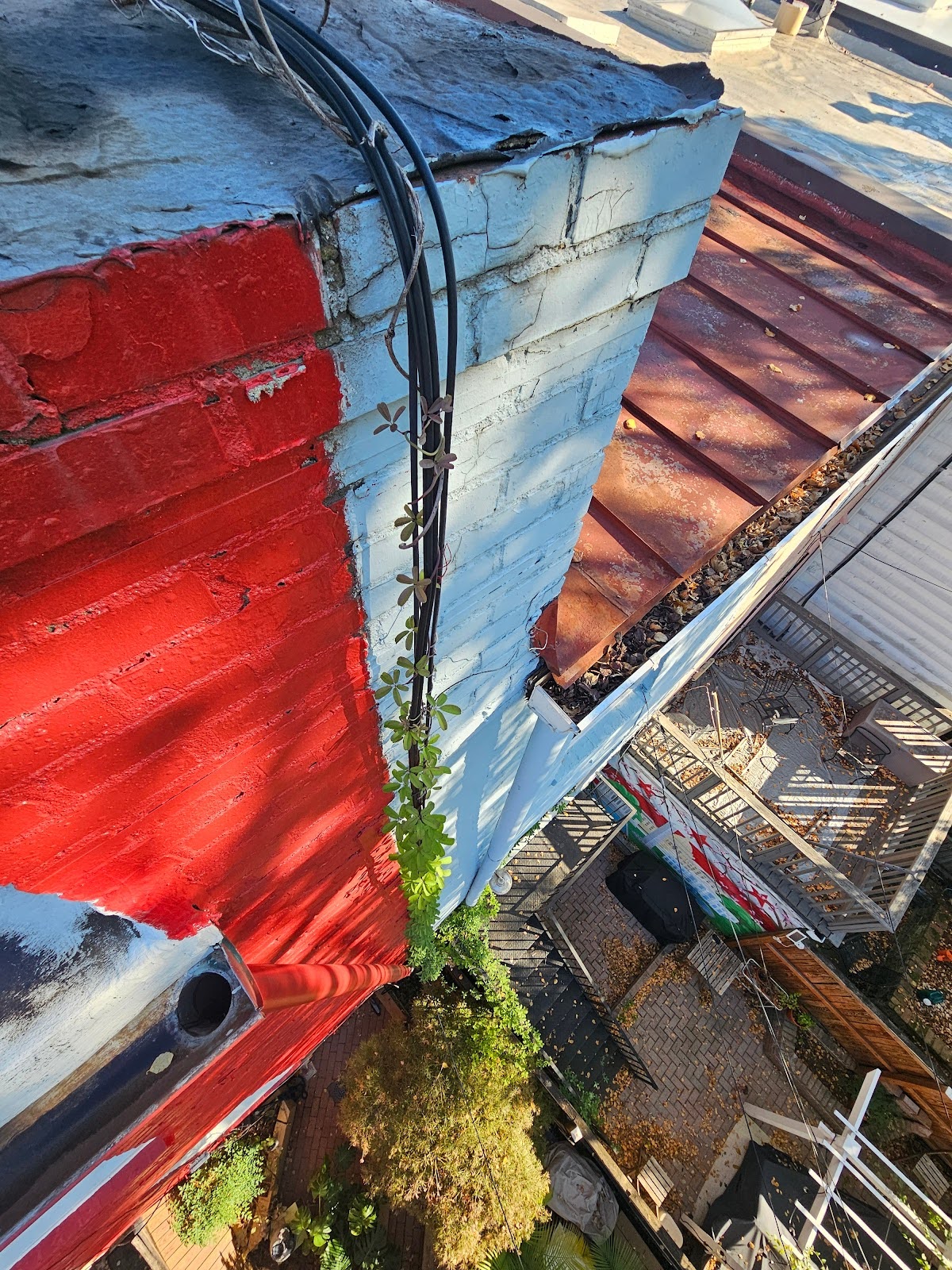
One of the most referenced building codes that applies to the general plethora of types of things built on a rooftop is the International Residential Building Code. This doesn’t apply to specifically commercial facilities. Instead though, with many of the low slope roofs here in Washington DC, this code and some of its provisions may apply. One of the things that the building code does say in the section on electrical is that cabling should be supported.
The IRC building code in section E3802.6 says that any cable must be “supported and secured” by straps, staples, or listed cable ties designed “so as not to damage the cable.” A loose, unsecured cable on a roof clearly violates the intent of protecting the wiring from damage. However, if you were concerned about people doing things right and looking for enforcement, this statute or requirement doesn’t actually help because the entire section of chapter 38 of the building code is intended to apply to electrical power service and branch wiring distribution, not communications and/or telephone wiring.
So this is one of those cases where it doesn’t seem right, but the building code by itself doesn’t make it easy to enforce better installation. However, the cabling installation just seems unprofessional and if people are able to watch cable installers do their job or supervise, they can request more professional work. As a roofing contractor, we aren’t always there when the cable installers are doing their specific trade work. Instead, we generally come way afterwards and only then see the work they’ve done. This, of course, doesn’t give us an opportunity to ask them to do better.
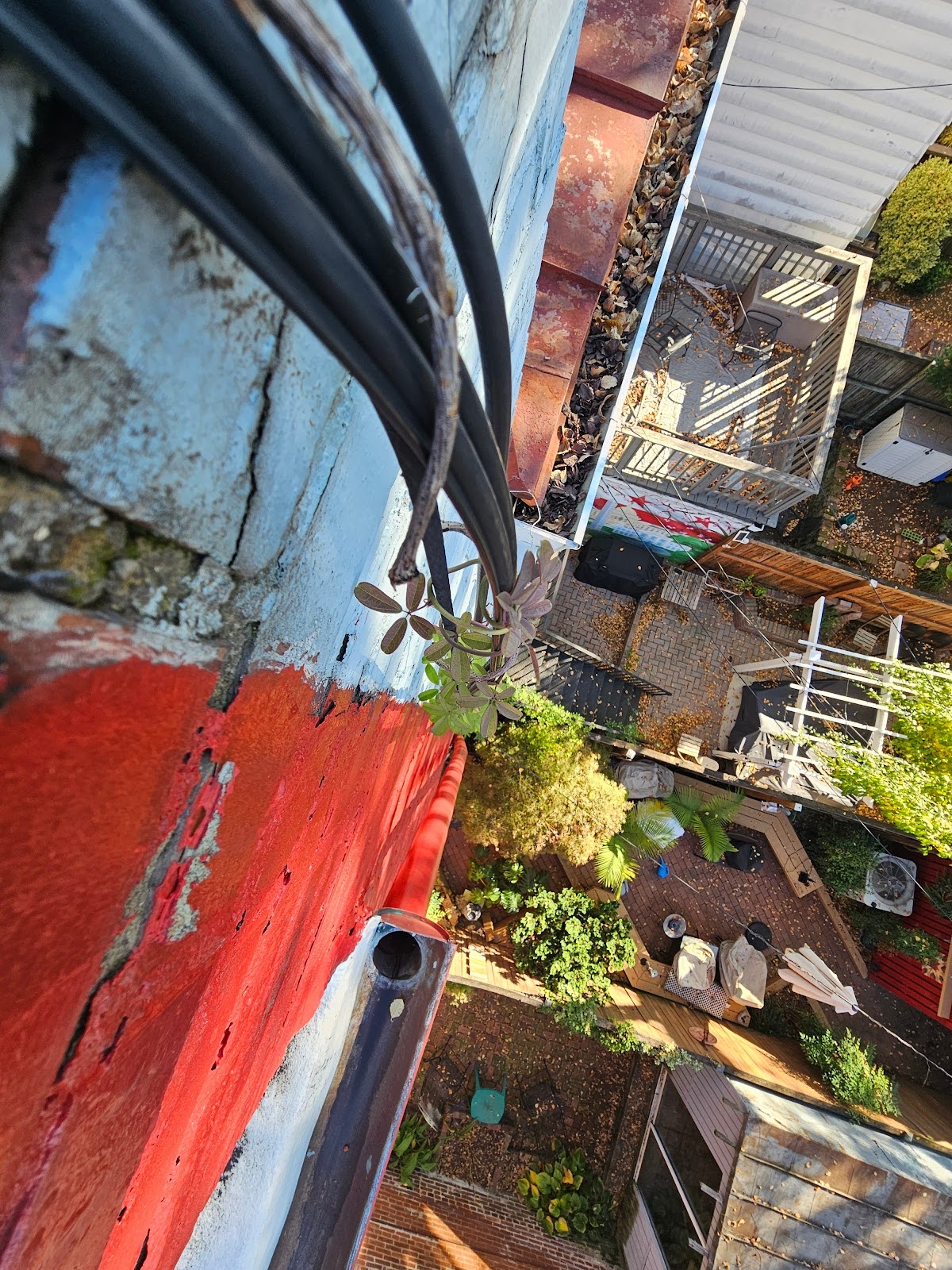
The next picture below shows something similar, but it’s actually different. The black tubing that comes off of the back of the HVAC condenser unit is a low pressure refrigerant line. It’s the piping that circulates the HVAC coolant fluid medium. This refrigerant is pumped from the condenser into the interior of a building, into an air handler.
From there, refrigerant runs through a coil which is used to cool the air blown from a fan and then distributed to parts of the building with a ductwork distribution system. This is one of the many different types of common cooling systems in Washington DC. Here, you can see the installer just draped their refrigerator and piping down the side of the building without securing it in any way.
The problem with this type of installation is that the piping, especially when filled with refrigerant, is heavy and there’s no strain resistance or method of securement to resist the pressure and force caused by the weight of that piping. Over time it will likely wear out and deteriorate or become damaged at an accelerated rate.
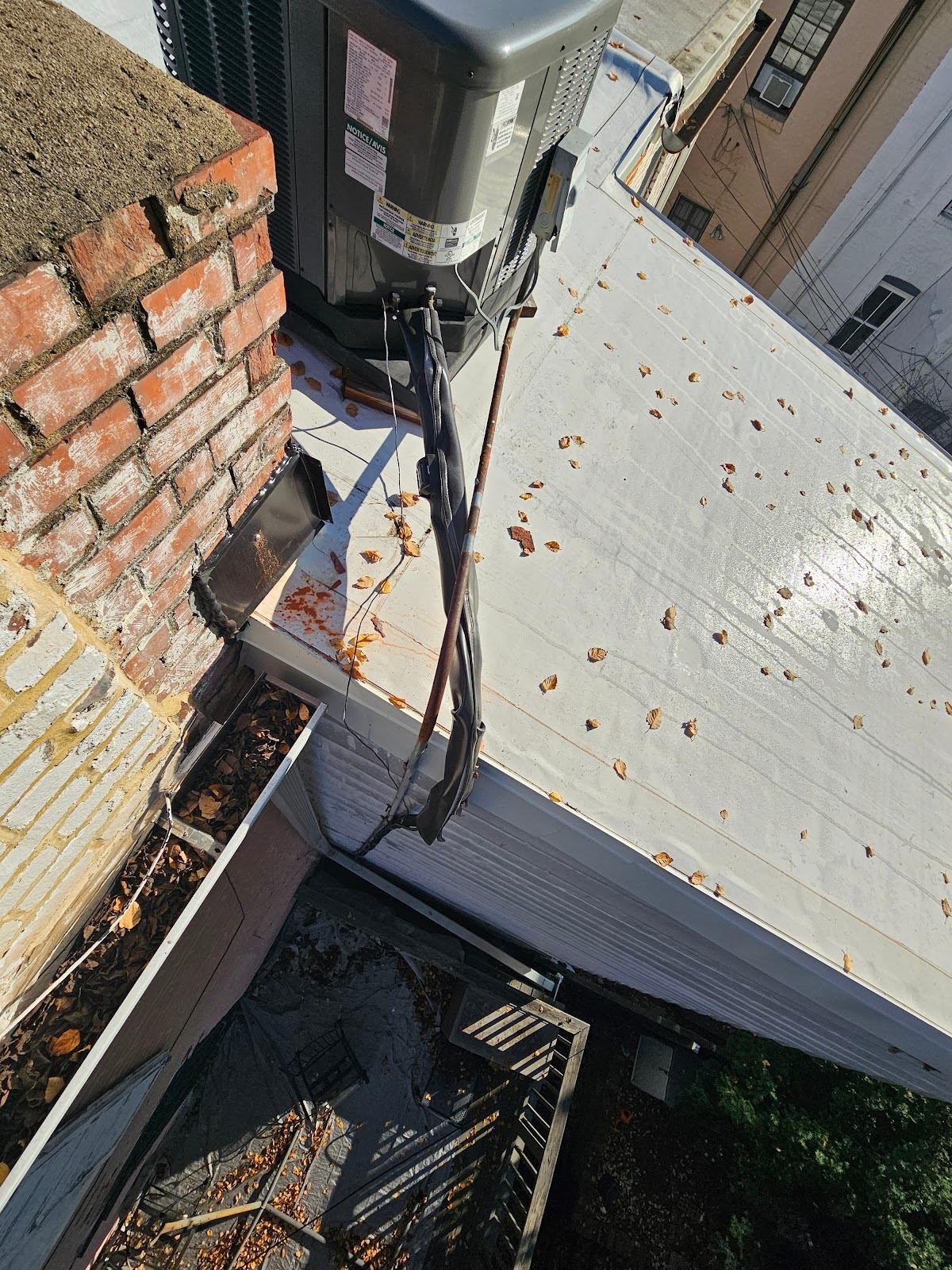
Also, the HVAC installer used wooden blocks to lift the condenser unit slightly, but they are also required, by the building code, to use a slip sheet to separate the bottom of the unit or the lifting blocks from the roof membrane itself. Many people skip this inexpensive yet important small step. We generally recommend that it be done to protect the roof membrane. In this case, the roof membrane itself is a TPO membrane that is a high-performance and long duration system that should be protected. It’s just simply common sense from a financial perspective.
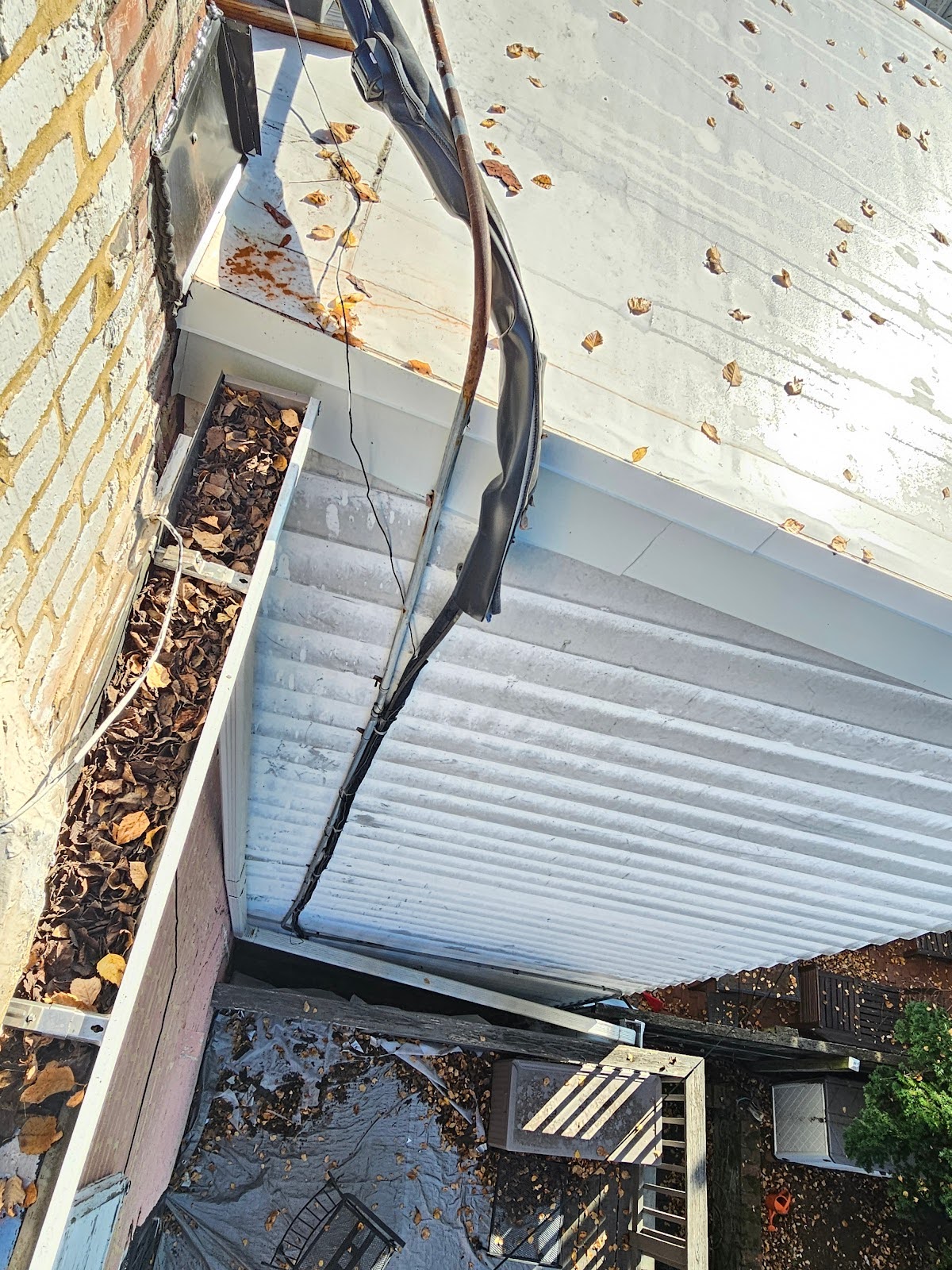
We provide this information here on our blog, and our website, to help our customers and future clients, and we recommend every building owner in DC who values the longevity of their roof (and their investments) and building use a contractor who values the simple and important principles of proper roof construction like Dupont Roofing DC. Our company specializes in flat roofing here in Washington DC and we’re happy to help building owners of almost all types.
Learn more about our company and the proper techniques of working with roofing on historic buildings in Washington DC here on our blog at DupontRoofingDC.com, and you can call us at (202) 840-8698 and email us at dupontroofingdc@gmail.com. We are happy to help and at least talk through options.


